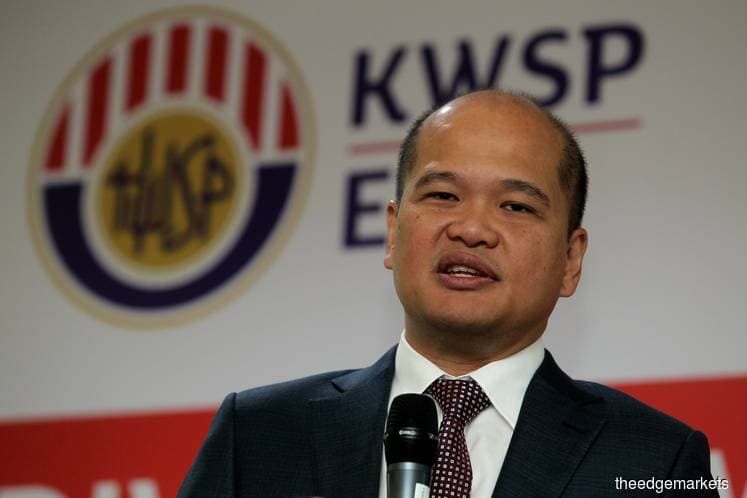
KUALA LUMPUR (Feb 12): The Employees Provident Fund (EPF) is targeting to expand its global assets portfolio to 32% in 2018 from 28% last year by actively looking to two overseas market to further enhance its presence and provide better returns for its members.
EPF chief executive officer Datuk Shahril Ridza Ridzuan said the need to look for more opportunities globally is to counter the impact of lower returns from the local equity market.
"We will be looking at adding one or two new market of territories into our (global asset) portfolio. We need to have a balance portfolio and exposure as much as we can to growth around the world.
"We continue to discuss with an appropriate authority for them to allow us to invest overseas because it is vital to ensure the fund continues to perform and provide returns that our members are expecting," he told reporters at the media briefing today, adding that Latin America would be one of the overseas markets.
As of Dec 31, 2017, global assets accounted for about 28% of the total global investment of RM221.56 billion, while the remaining 72% was held under domestic assets.
"At 28%, it is pretty commendable resulting in very high return for our members.
"Return is one thing but risk management is far more important to us as it allows us to make sure that we have assets in the right market and industry so it helps to [counter] the downturn in any one market or any one sector for us to get the return," he explained.
As a retirement fund, EPF has declared a dividend rate of 6.9% for 2017 — the highest rate since 1997 — for its conventional savings (Simpanan Konvensional) with a payout totalling of RM44.15 billion.
EPF also announced a 6.4% dividend rate for shariah savings (Simpanan Shariah) for 2017, with a payout totalling RM3.98 billion.
That said, the total payout for 2017 amounted to RM48.13 billion, an increase of 29.8% from 2016.
In a statement on Saturday, EPF chairman Tan Sri Samsudin Osman said EPF is pleased with the overall performance in 2017, which is also a landmark year for EPF as it is now managing two savings schemes and declaring two dividend rates.
"Simpanan Shariah has shown a strong performance for its first dividend declaration.
"This reaffirms the strength and health of EPF's shariah asset and should come as good news to our members [who] have switched to Simpanan Shariah," he said.
Additionally, Samsudin said Simpanan Shariah derived its income solely from its portion of shariah assets while for Simpanan Konvensional, a total of 38% of the income was generated by its share of shariah assets and the remaining 62% was from non-shariah assets.
"There will always be a deviation in Simpanan Shariah returns from Simpanan Konvensional in the short term, but the returns are expected to be similar over the long term as both share the same investment objectives and strategies," he added.
At the same time, with the higher dividend declared, EPF recorded its highest-ever gross investment income since its establishment in 1951. The RM53.14 billion income represented an increase of 14.13%, compared with RM46.56 billion recorded in 2016.
Part of RM53.14 billion amount, about RM4.60 billion was attributed to Simpanan Shariah, a reflection to its share of total shariah assets, while RM48.54 billion was attributed to the Simpanan Konvensional.
Samsudin said the return on Simpanan Konvensional is helped by earnings from non-shariah investments following the increase in the performance of worldwide banking stocks while Simpanan Shariah does not invest in conventional banking stocks as they are non-shariah compliant.
"The equity impairments from shariah-compliant stocks, mainly from the oil and gas as well as telecommunications sectors, [have] lowered the EPF's shariah portfolio earnings," he explained.